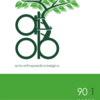First long-term analysis of survival and clinical outcome in patient-specific instrumentation for total knee arthroplasty: follow-up of a prospective cohort study
Total knee arthroplasty, patient-specific instrumentation, implant survival, patient-reported outcome measures
Published online: Apr 23 2024
Abstract
Patient-specific instrumentation (PSI) was introduced to improve post-operative alignment, and consequently the revision rate and clinical results after total knee arthroplasty (TKA). Short- to mid-term data are conflicting regarding these theoretical advantages of PSI. The purpose of this retrospective analysis was to evaluate the survival rate and clinical outcome in PSI TKA 8.4 years after initial surgery. To our knowledge, no other study investigated long-term follow-up of TKA procedures using PSI. From a total cohort of 184 consecutive patients (200 TKA) 136 patients (144 TKA, 72%) were prospectively analysed at a mean follow-up of 8.4 years (±0.4). A survival analysis with all-cause revision of TKA as endpoint was performed. Patient-reported outcome measures (PROMs) were obtained preoperatively and after 1-, 2-, 5-, and 8.4-years of follow-up. Differences between these moments of follow-up were analysed. At final follow-up, 4 TKAs (2%) had undergone revision, all between 2-4 years after primary surgery. Reasons for revision were late infection, aseptic loosening, instability and polyethylene insert breakage. The median score of certain PROMs (WOMAC, VAS, EQ-index, EQ-VAS) decreased compared to previous follow-up scores but were significantly higher than preoperative scores. After 8.4 years of follow-up, no additional revision surgery was performed compared to 5-years postoperatively. Certain PROMs at 8.4-year follow-up decreased compared to earlier moments of follow-up, but all PROMs improved compared to preoperative PROMs.
